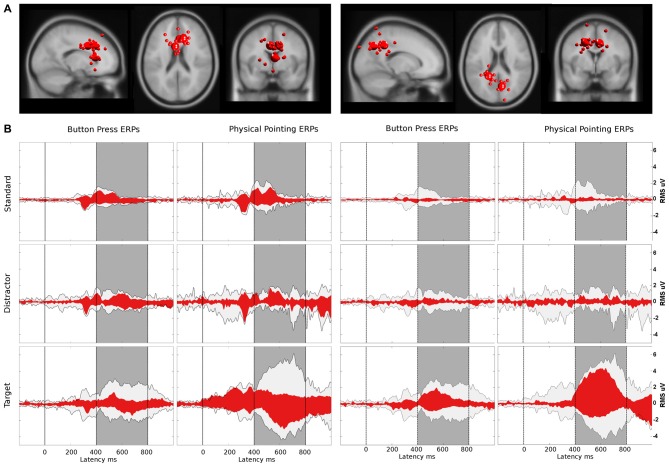Figure 9.
(A) Bigger spheres represent cluster centroids and smaller spheres individual ICs with the cluster centroid located in or near the anterior cingulate cortex (ACC; left) and the dorsal parietal cortex (right). Cluster locations are projected onto the standard MNI brain volume and displayed in sagittal, horizontal, and coronal views. One cluster, located in the left ventral ACC (talairach coordinates: x = −5, y = 9, z = 34, corresponding to BA 24/BA 32) consisted of nine ICs. A second cluster located near the right ventral ACC (x = 3, y = 24, z = 6, near to BA 24) comprised eight ICs and a third located near to the right dorsal ACC (x = 12, y = 26, z = 31, corresponding to BA 9/BA 32) comprised 10 ICs from 12 participants. For the clusters near the parietal cortex, one was located in the left parietal cortex (talairach coordinates: x = −19, y = −42, z = 39, corresponding to BA 31) and consisted of 11 ICs. A second cluster located in the posterior parietal cortex (x = 11, y = −66, z = 38, corresponding to BA 7) comprised seven ICs from 12 participants. (B) Red: ERP contributions of the clusters located in or near the ACC and the parietal cortex, respectively; light gray: ERP envelope computed by back-projecting all clusters located in the gray matter of the brain model. The dark gray area displays the latency range of the P3 component from 400–800 ms after a color change which was used for calculating corresponding pvafs. The left and right columns display envelopes for the button press and the physical pointing condition, respectively, with rows displaying from top to bottom the different stimuli (standard, distractor and target).

